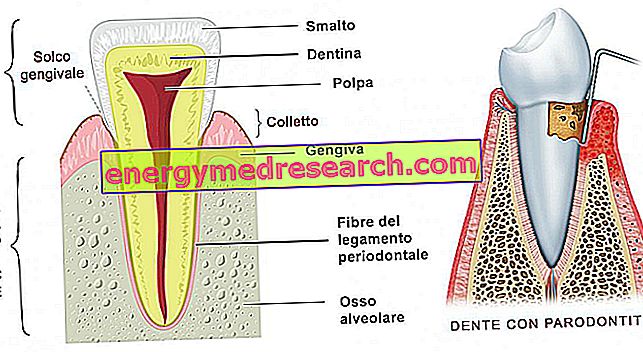
The gingival sulcus is a small fissure normally present between the tooth and the gum tissue.
The gingiva is the tissue that surrounds the collar of the teeth and covers the alveolar processes of the maxillary bones and the jaw. With its presence, the gum wraps around the lower part of the dental crown for all its circumference, a bit like the collar of a shirt does with the neck (it is no coincidence that we speak of a gingival collar). This collar is not perfectly adherent to the enamel but is easily detachable, since in this area the gum forms a small invagination called the gingival sulcus (this is called free gingiva). Only more deeply does the gum still hold itself tenaciously to the tooth (to the cement that covers the root and to the underlying alveolar bone).
Under physiological conditions the gingival sulcus has a depth varying from 0.5 to 2 mm and reaches the deepest part of the dental collar (junction between the enamel and the root cement).
The depth of the gingival sulcus can be assessed by the dentist by inserting an instrument called a periodontal probe. Clinically, a survey up to 3 mm deep represents a state of health, from 4 mm upwards we have instead a periodontal pocket. The deeper the groove, the less chance there is to clean it properly with home-based oral hygiene tools.
The gingival sulcus represents a vulnerable anatomical area, because it is predisposed to be the site of bacterial proliferation, offering a certain protection to parodontogenic anaerobic species. The tips of the toothbrush have some difficulty in cleaning the gingival sulcus, while the correctly used dental floss can effectively clean it without damaging it. Even the water jet and modern electric toothbrushes ( hydrodynamic and ultrasonic sonic ) can effectively clean the gingival sulcus.
In the absence of adequate cleaning of the gingival sulcus, bacterial proliferation can inflame the gingiva and determine a greater separation from the tooth surface; the detachment of the gum from the root determines the formation of a space that is called "periodontal pocket". As the disease progresses, in the absence of surgery, the pockets become deeper and deeper, with destruction of the gum and other tooth support structures (periodontal disease), up to its fall.



